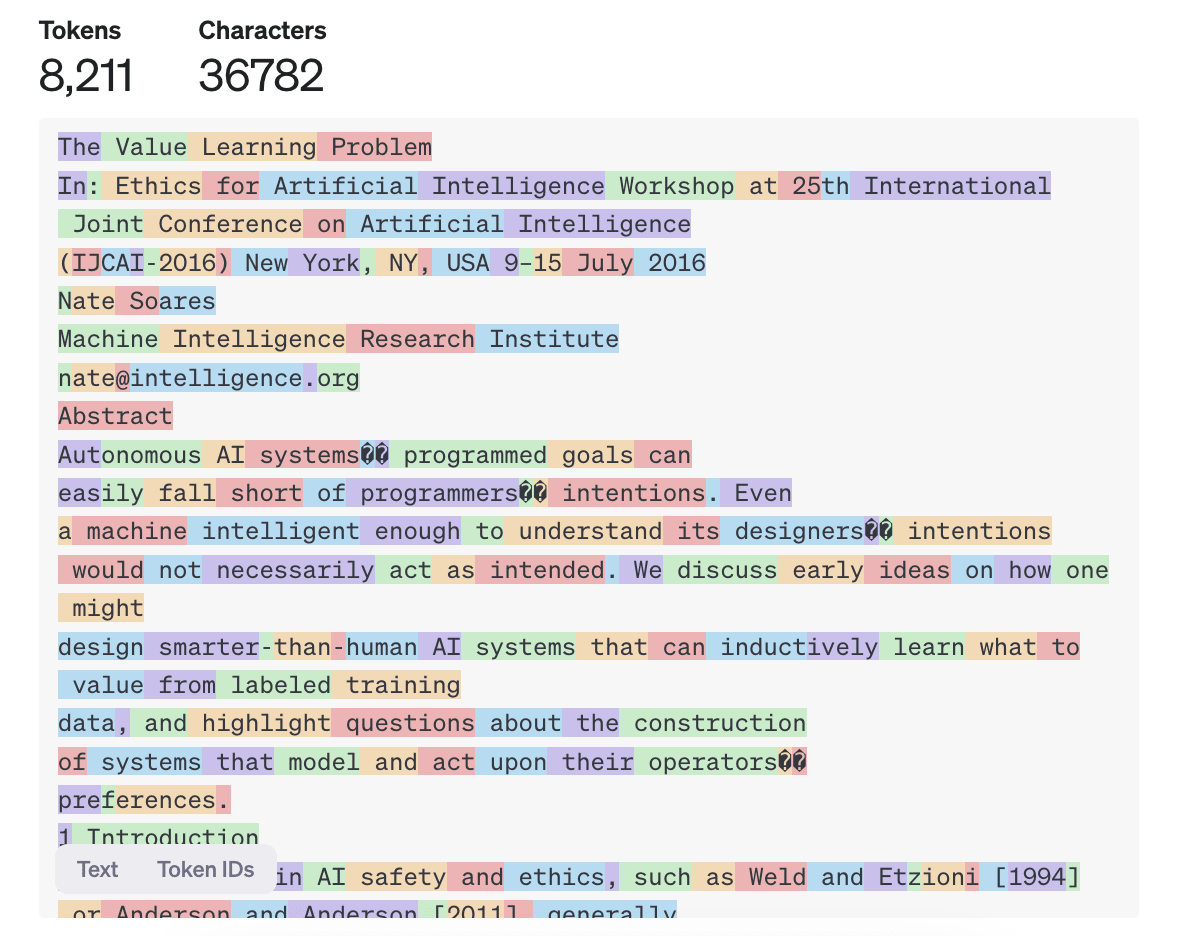Posts
Wiki Contributions
Comments
Yeah, I saw your other replies in another thread and I was able to test it myself later today and yup it's most likely that it's OpenAI's new LLM. I'm just still confused why call such gpt2.
Copy and pasting an entire paper/blog and asking the model to summarize it? - this isn't hard to do, and it's very easy to know if there is enough tokens, just run the text in any BPE tokenizer available online.

I'm not entirely sure if it's the same gpt2 model I'm experimenting with in the past year. If I get my hands on it, I will surely try to stretch its context window - and see if it exceeds 1024 tokens to test if its really gpt2.
But if your goal is to achieve high counterfactual impact in your own research, then you should probably draw inspiration from the opposite: "singular" discoveries, i.e. discoveries which nobody else was anywhere close to figuring out.
This idea reminds me of the concepts in this post: Focus on the places where you feel shocked everyone's dropping the ball.
I don't think this phenomenon is just related to the training data alone because in RLLMv3, the " Leilan" glitch mode persisted while " petertodd" became entirely unrelated to bitcoin. It's like some glitch tokens can be affected by the amount of re-training and some aren't. I believe that there is something much deeper is happening here, an architectural flaw that might be related to the token selection/construction process.
I think altruism isn't directly evolutionarily connected to power, and it's more like "act morally (according to local culture) while that's helpful for gaining power" which translates to "act altruistically while that's helpful for gaining power" in cultures that emphasize altruism. Does this make more sense?
I think that there is a version of an altruistic pursuit where one will, by default, "reduce his power." I think this scenario happens when, in the process of attempting to do good, one exposes himself more to unintended consequences. The person who sacrifices will reduce his ability to exercise power, but he may regain or supersede such loss if the tribe agrees with his rationale for such sacrifice.
Misaligned ASI and pathogens don't have the same attack surface. Thank you for pointing that out. A misaligned ASI will always take the shortest path to any task, as this is the least resource-intensive path to take.
The space of risks is endless if we are to talk about intelligent organisms.